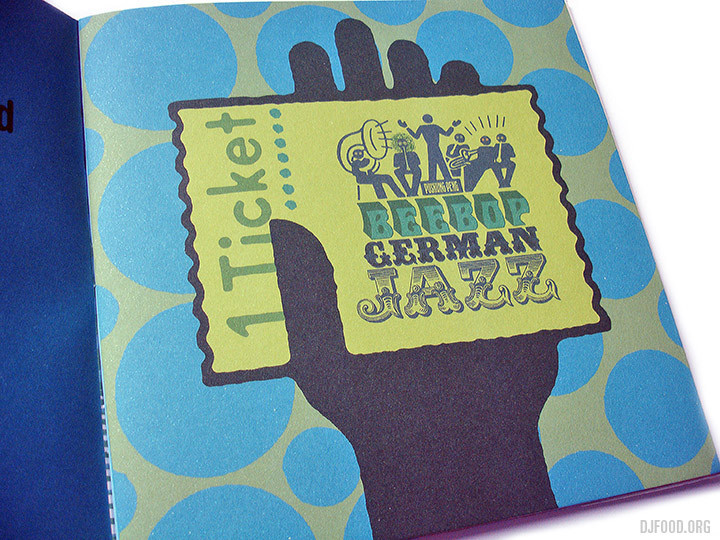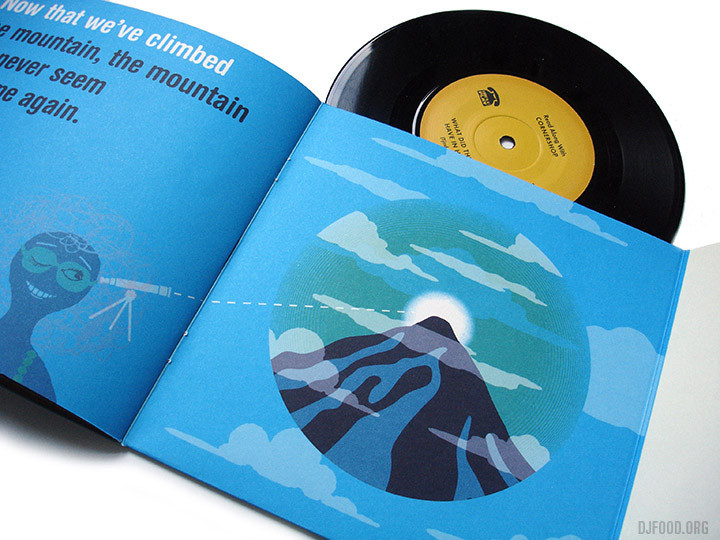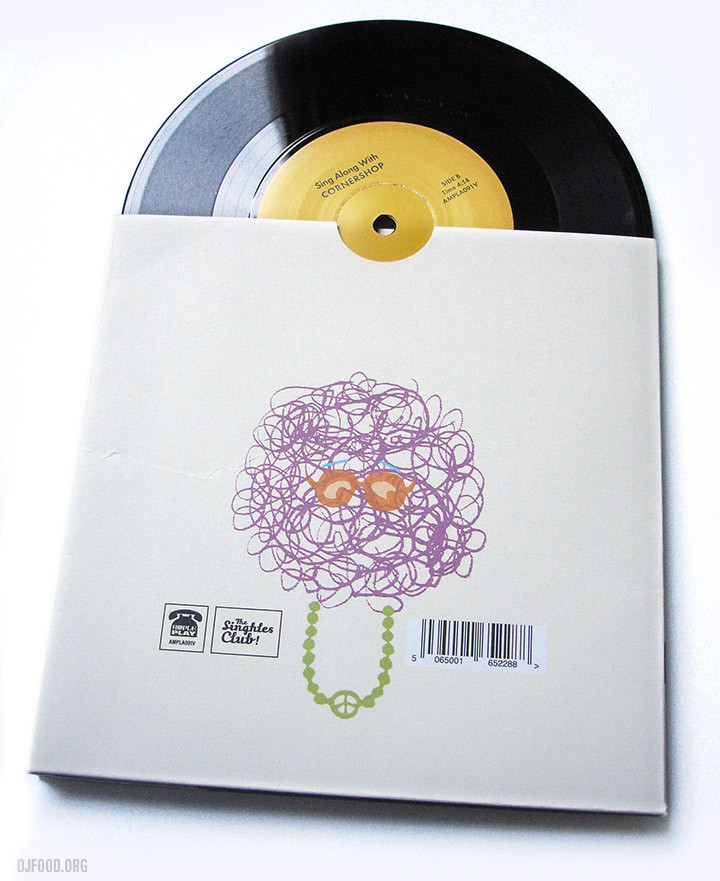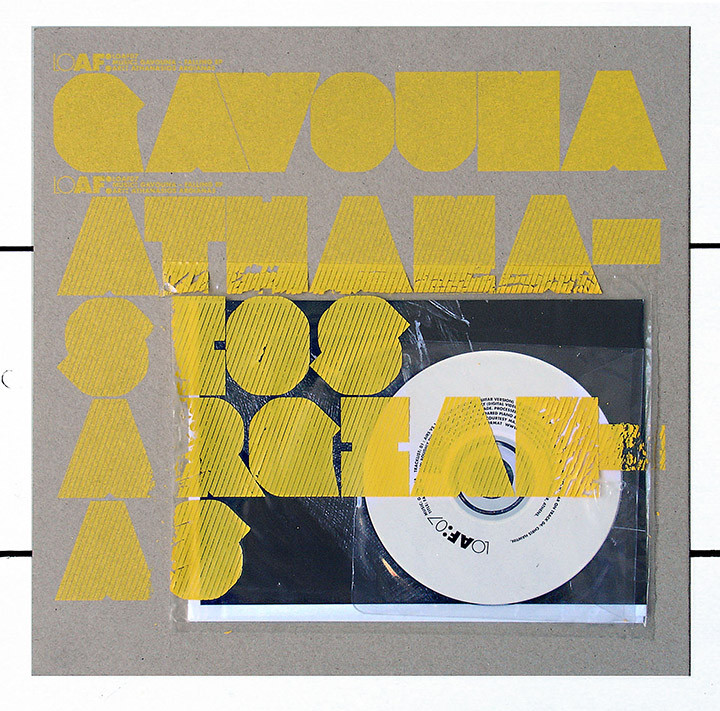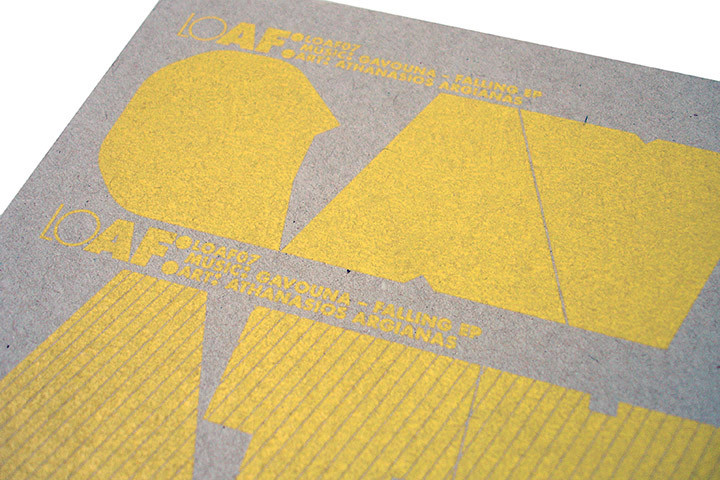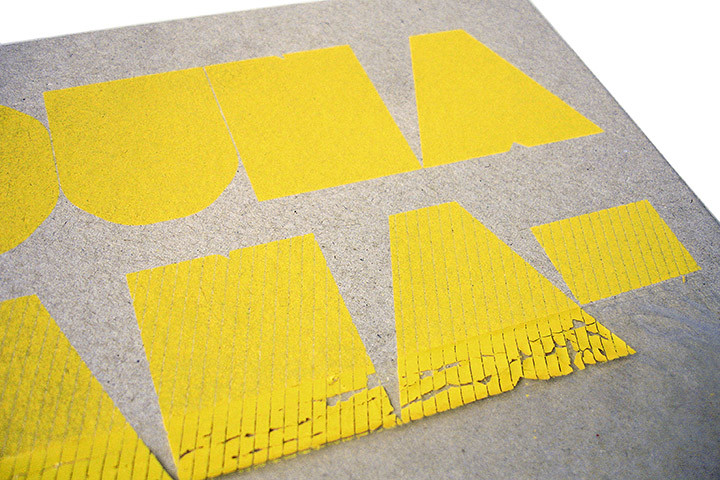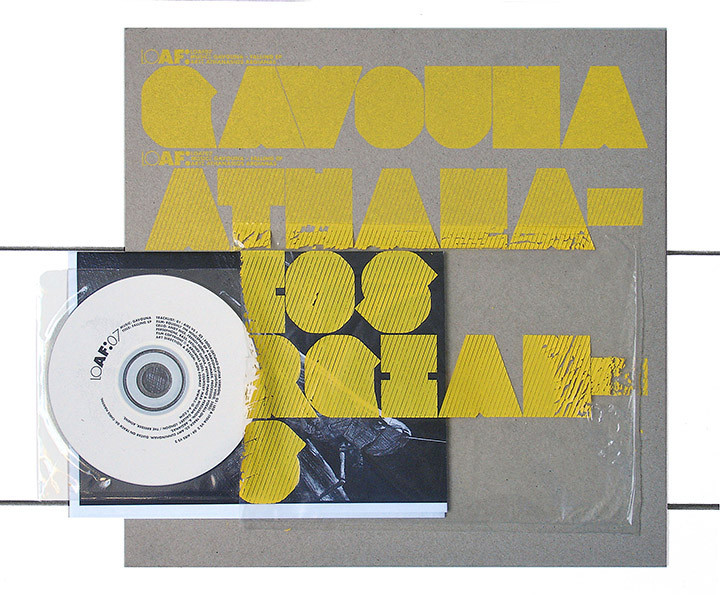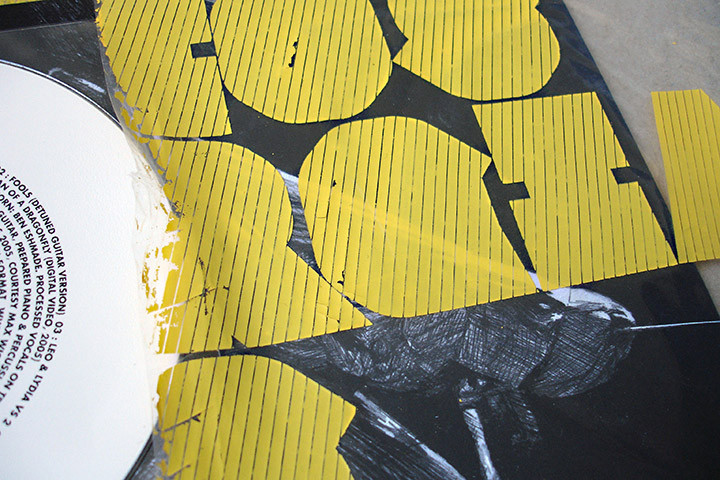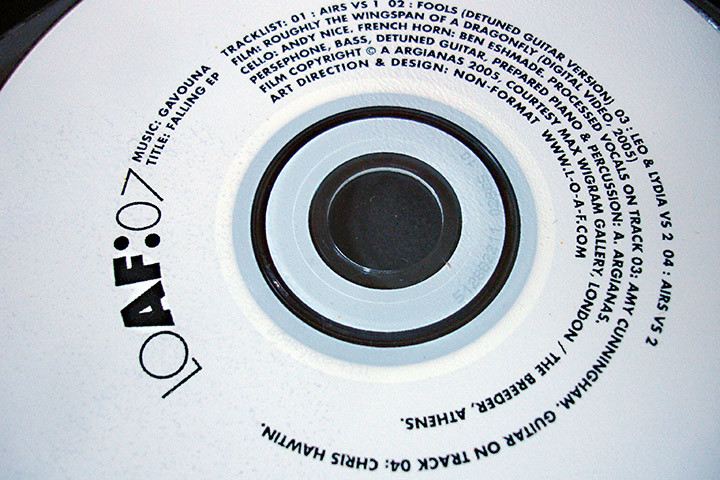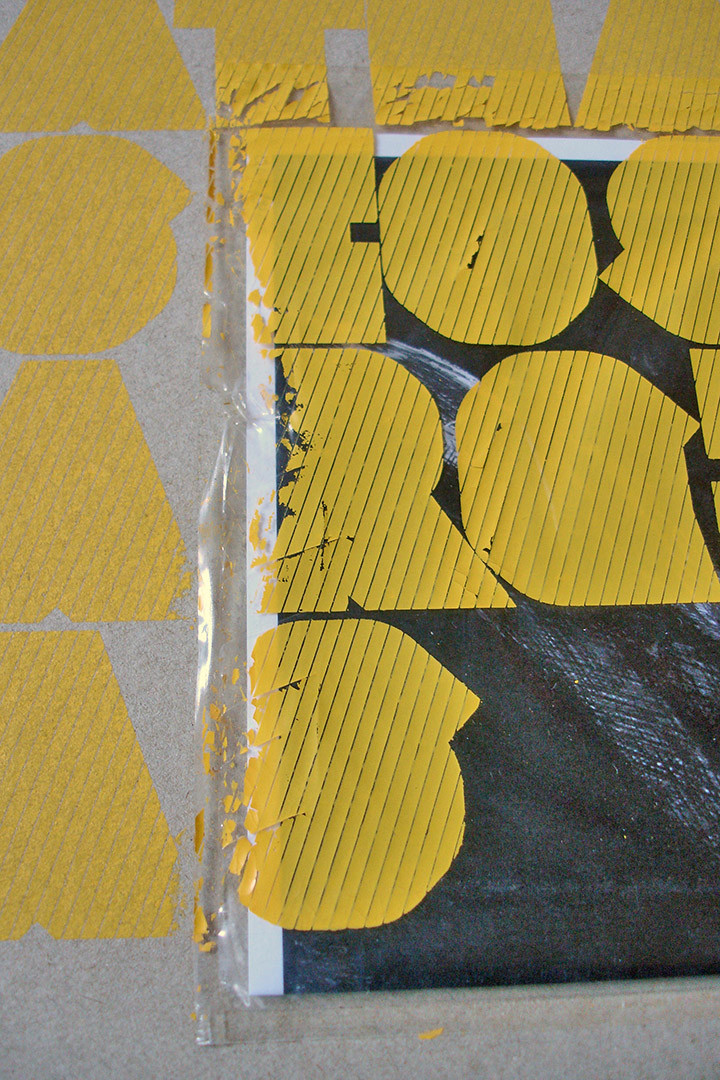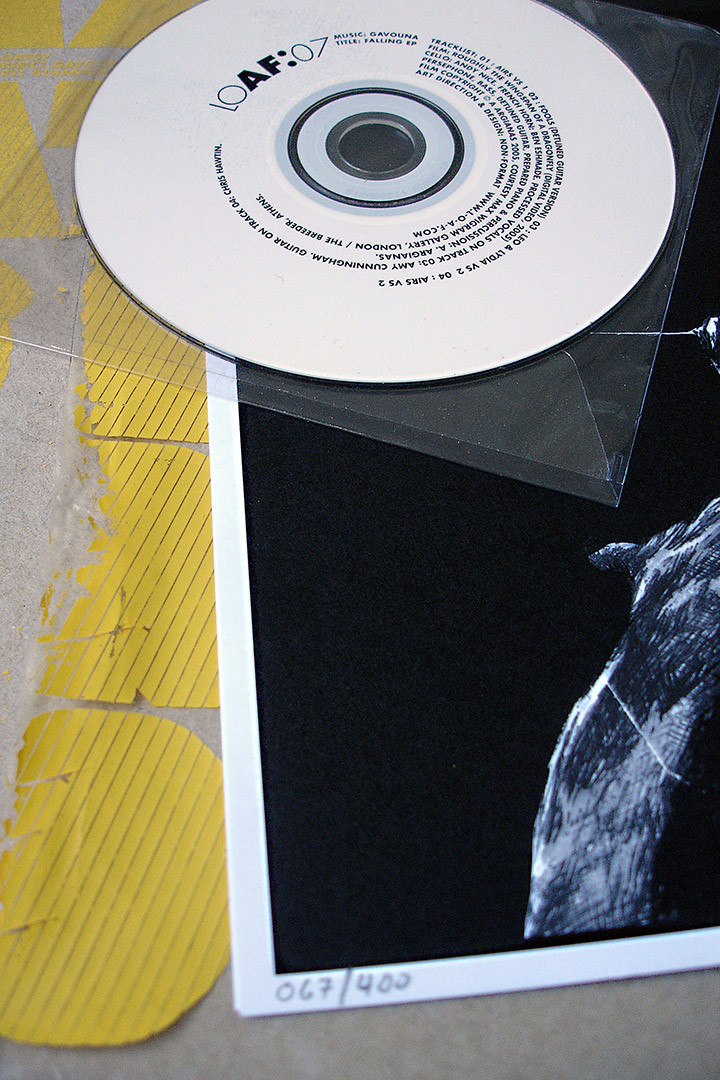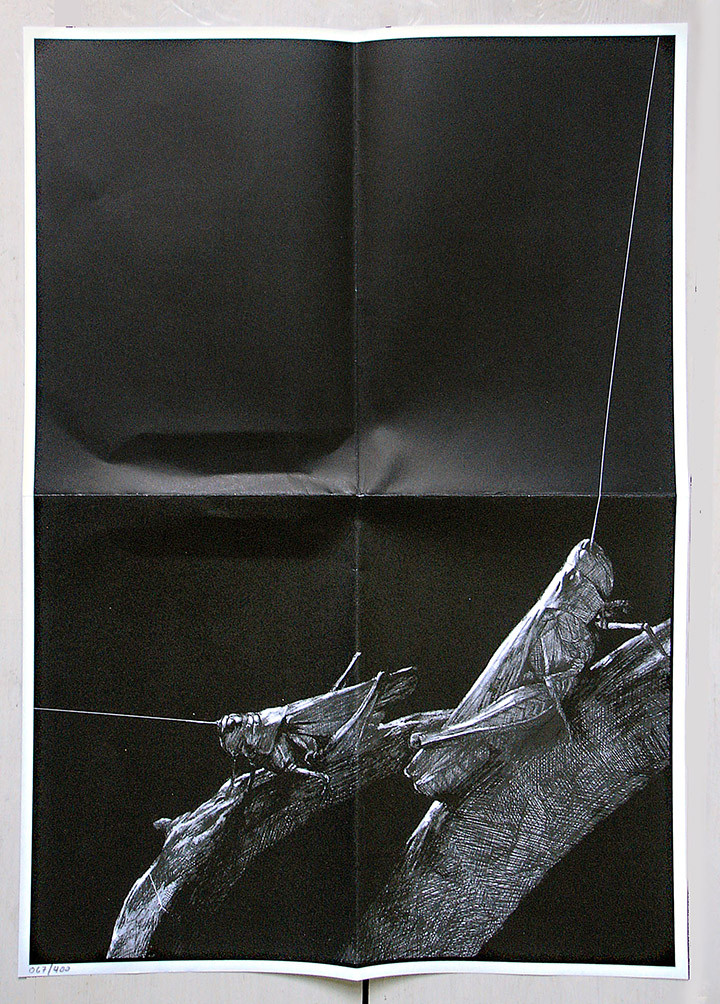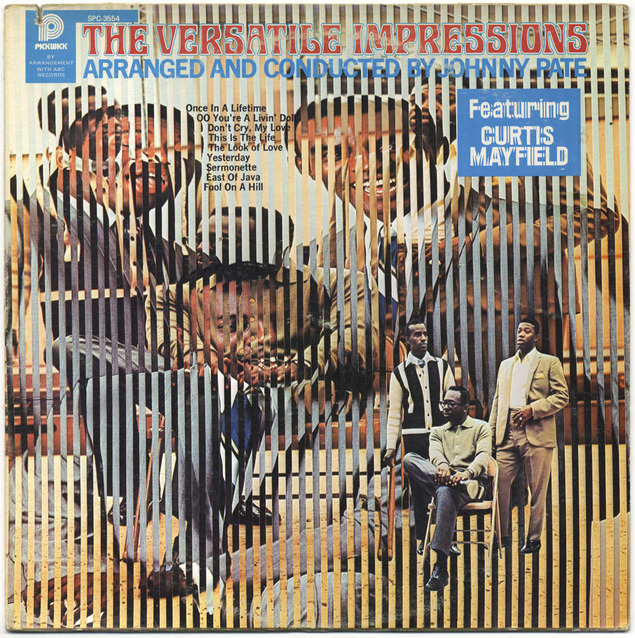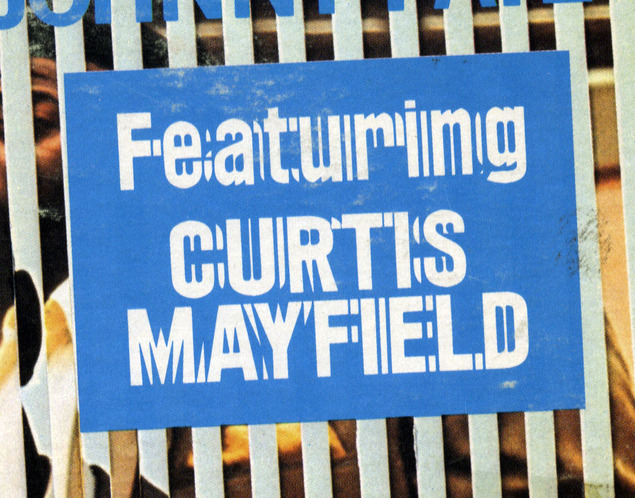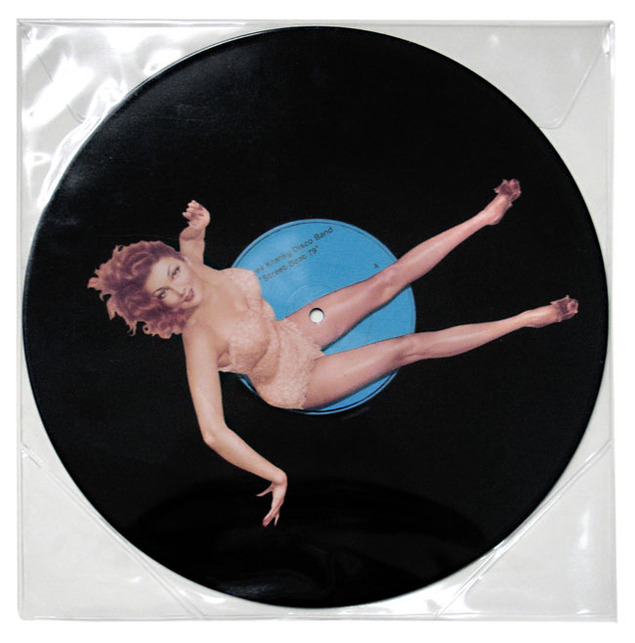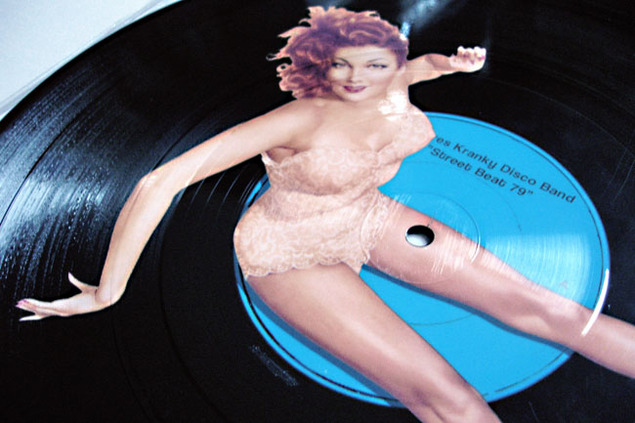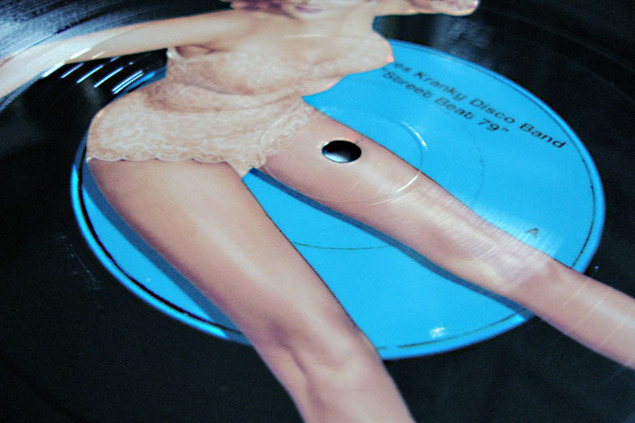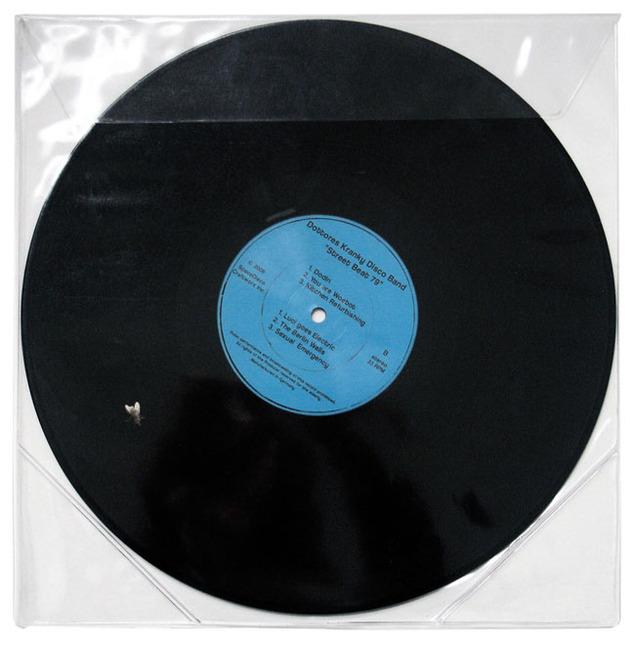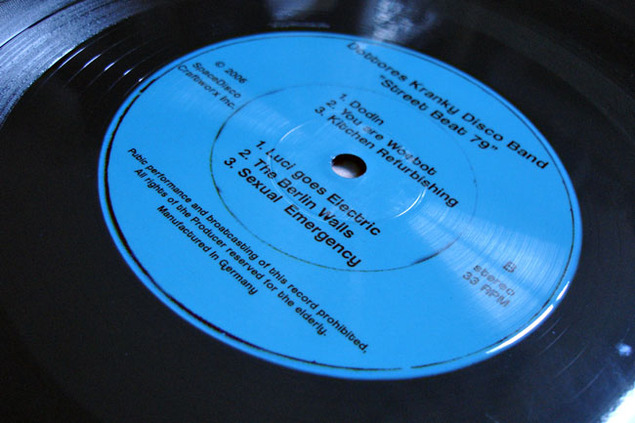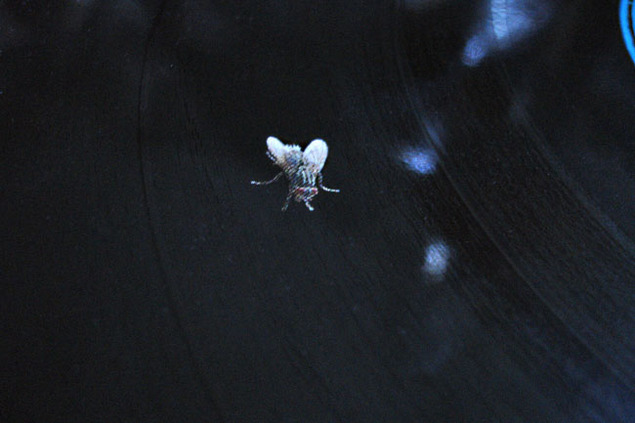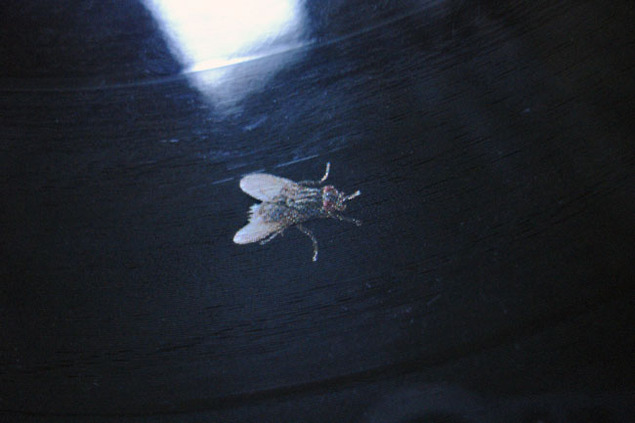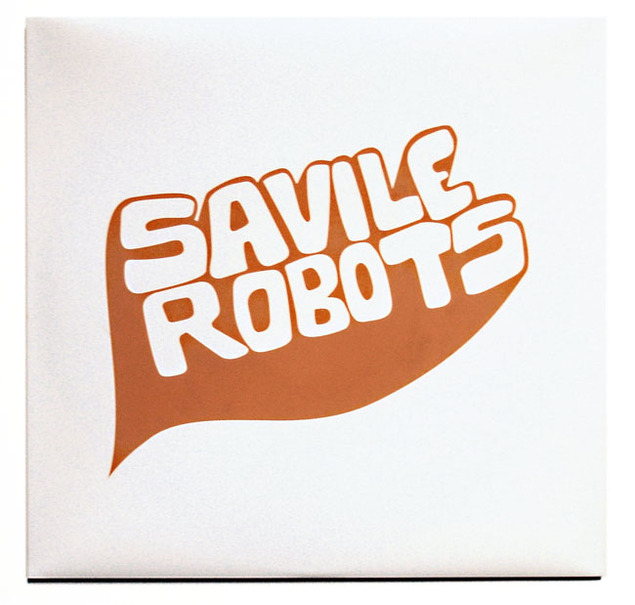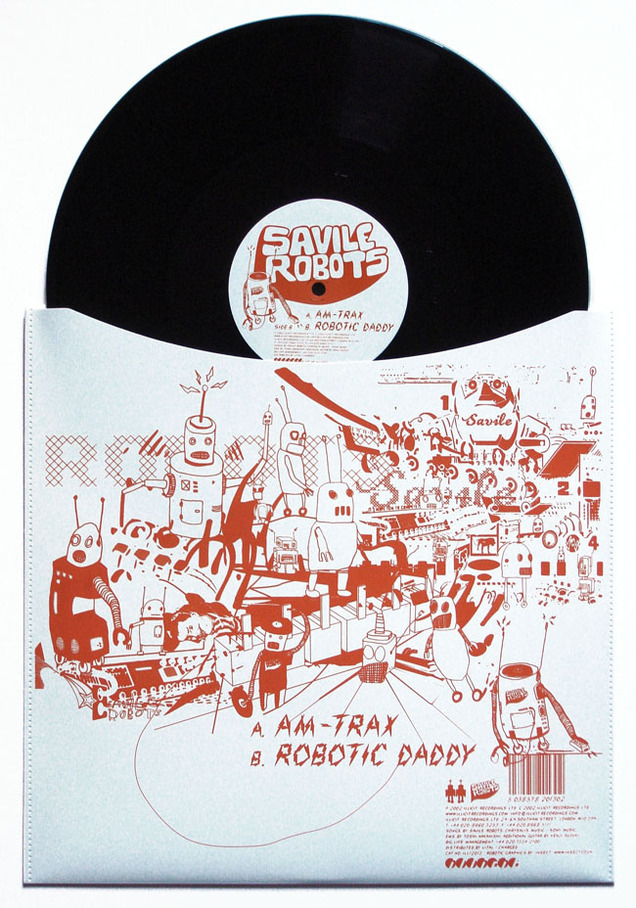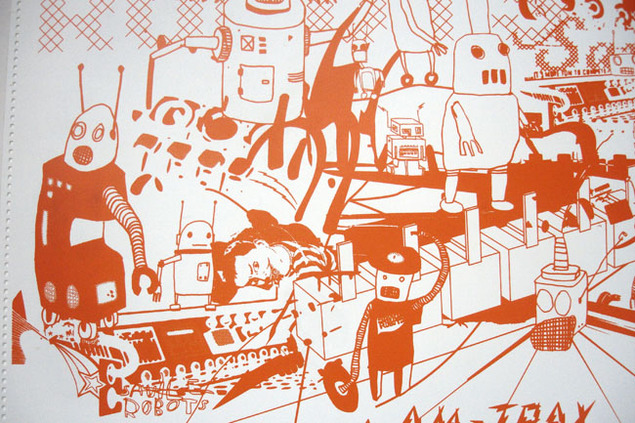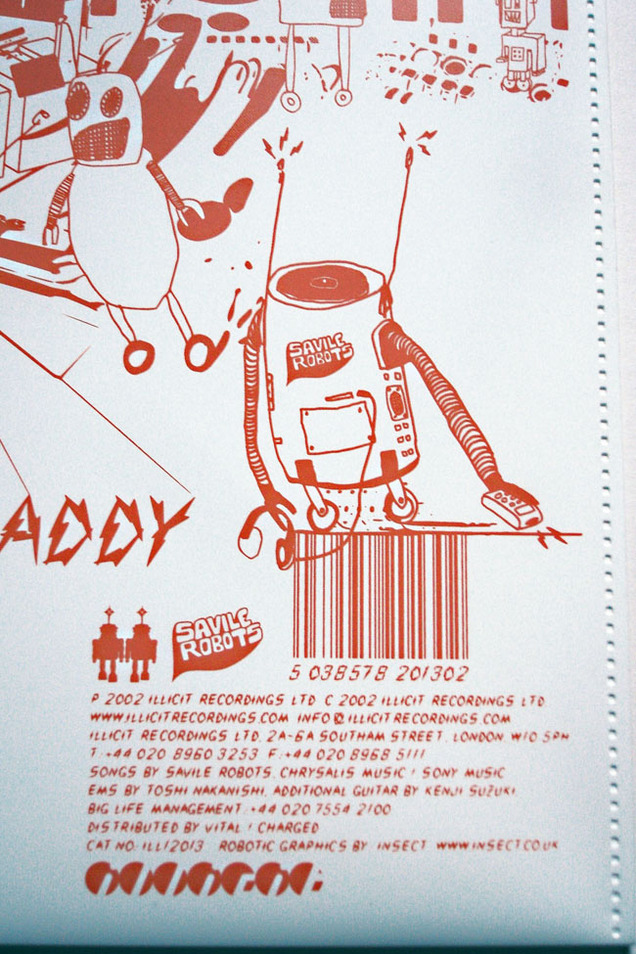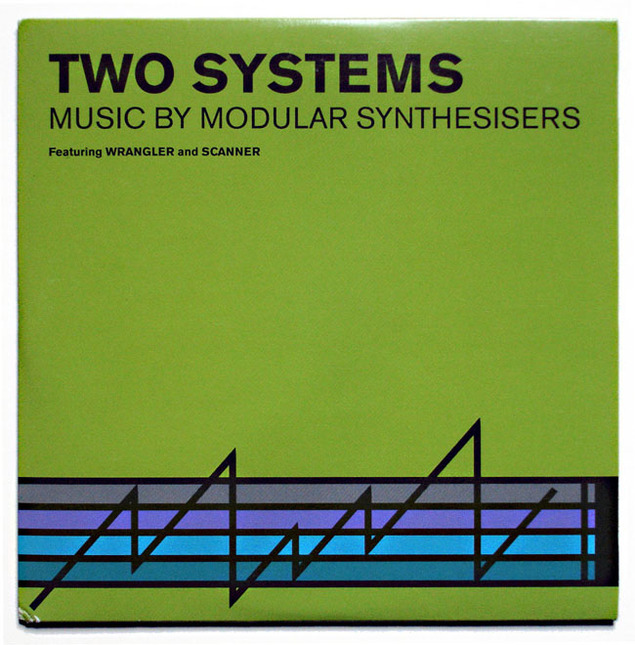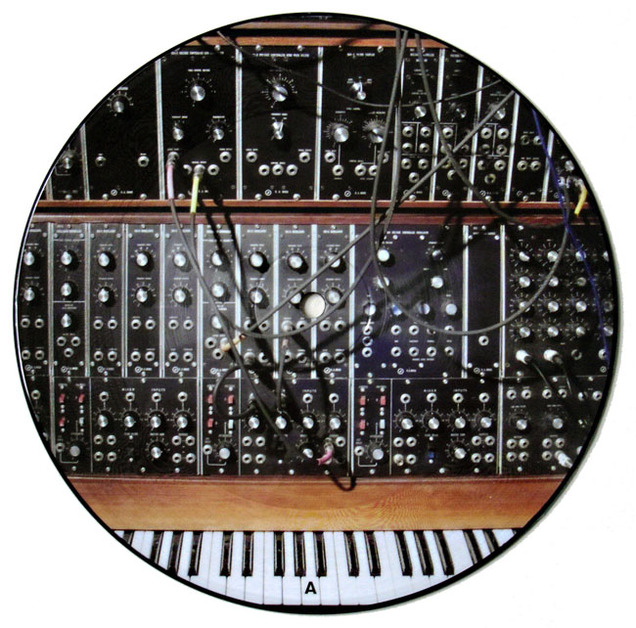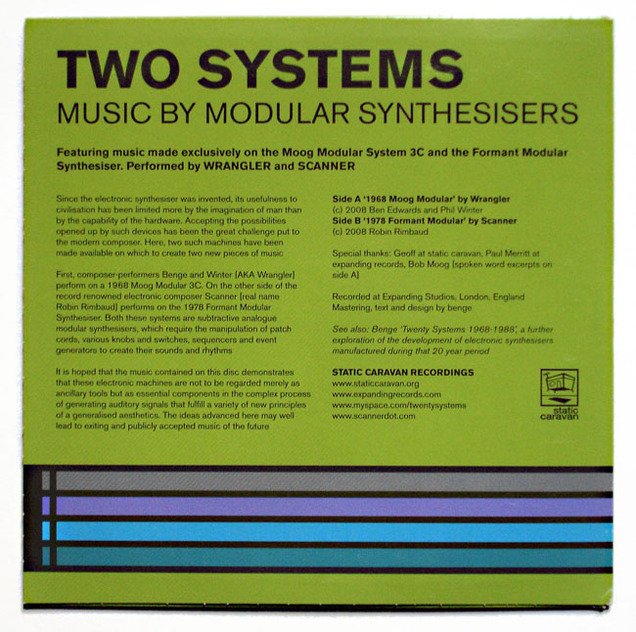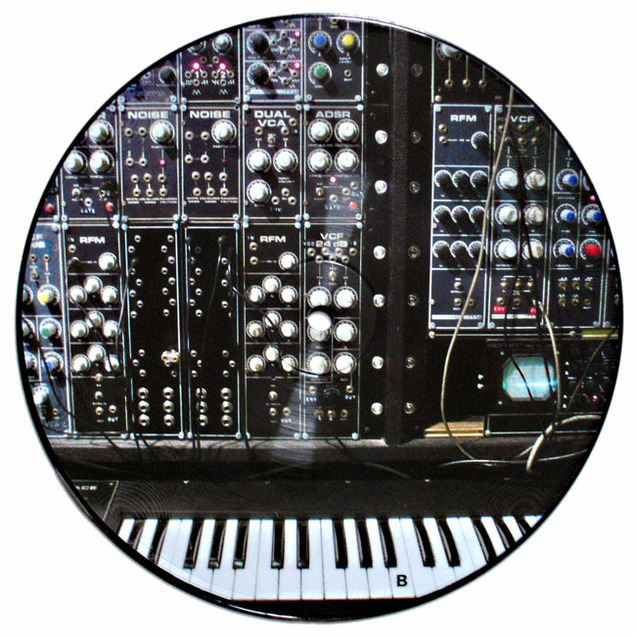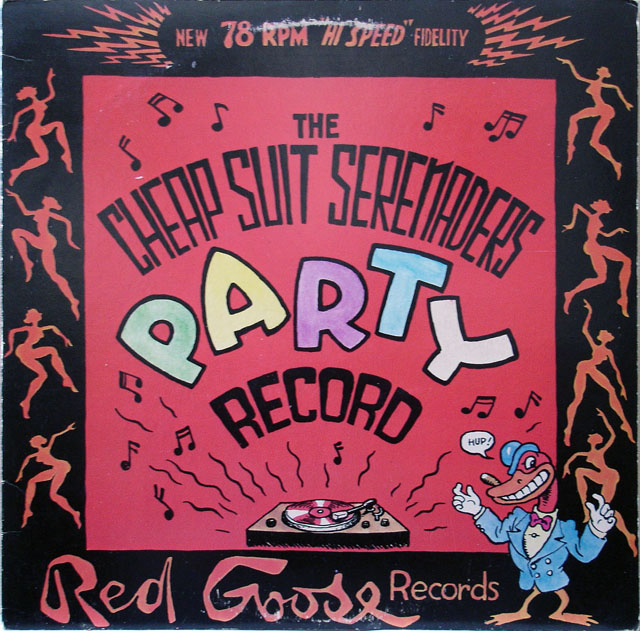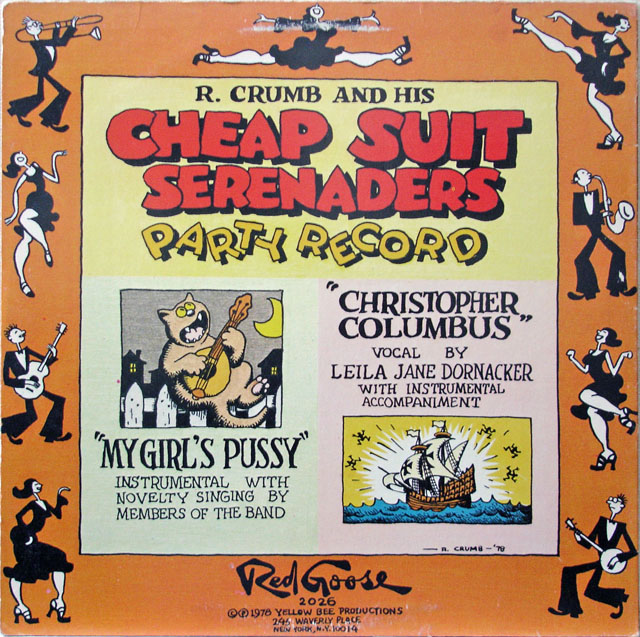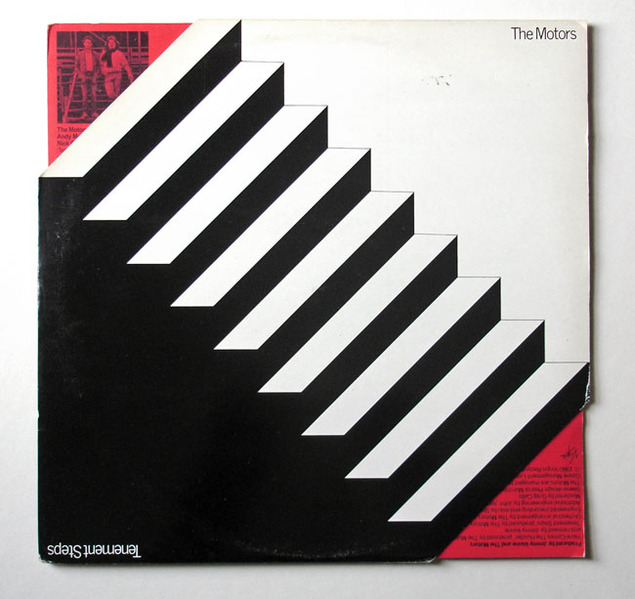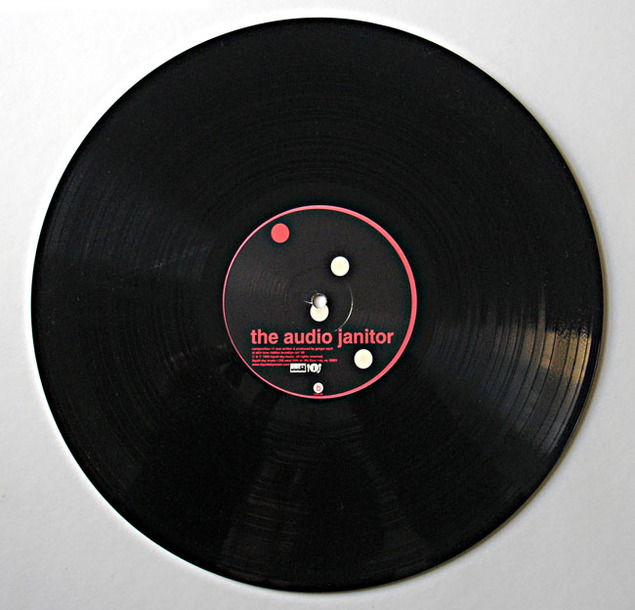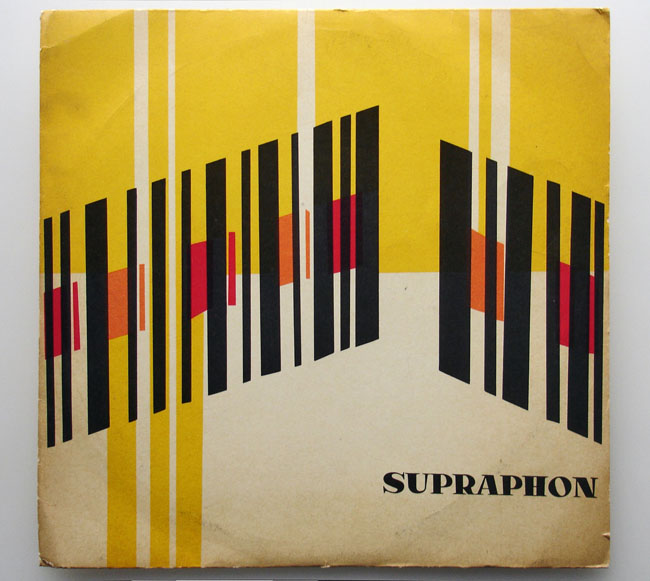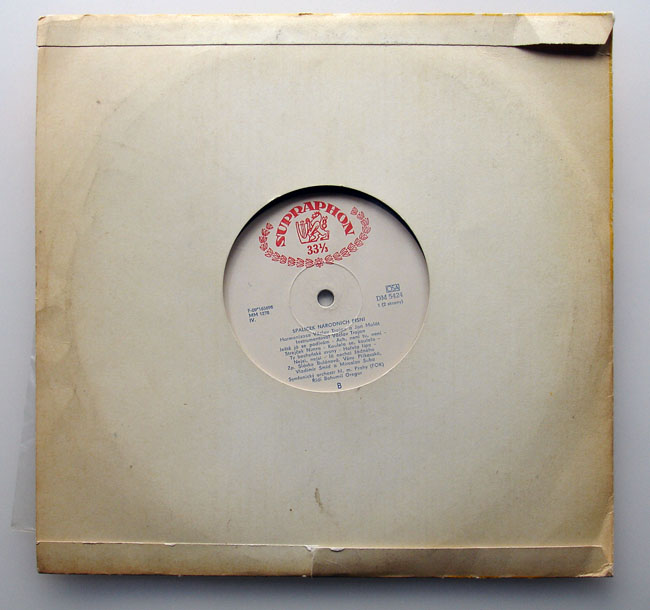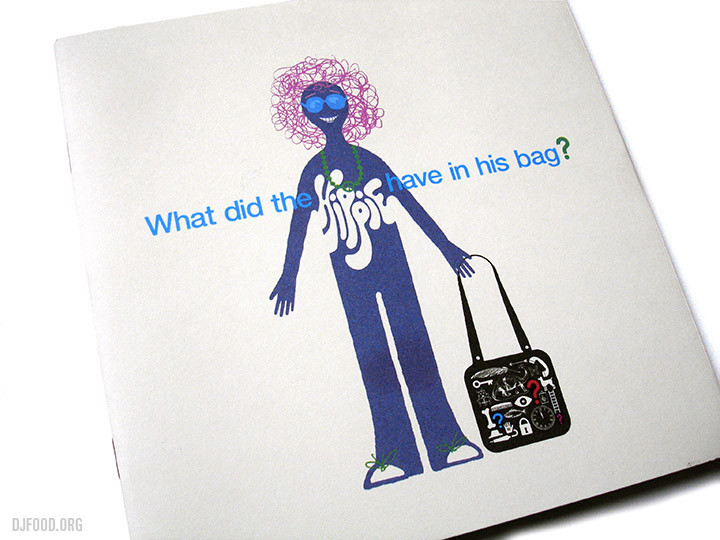 I picked this up a few weeks back, a short book with a record by Cornershop called, ‘What Did The Hippy Have in His Bag?’. It’s a lovely little thing with a simple song going through the content of said bag (not what you’d expect), perfect for kids and with an instrumental on the B side you can learn it and then sing your own version. Released a few years back on the band’s Ample Play Records’ Singles Club, you can still find copies in their shop for £12.
I picked this up a few weeks back, a short book with a record by Cornershop called, ‘What Did The Hippy Have in His Bag?’. It’s a lovely little thing with a simple song going through the content of said bag (not what you’d expect), perfect for kids and with an instrumental on the B side you can learn it and then sing your own version. Released a few years back on the band’s Ample Play Records’ Singles Club, you can still find copies in their shop for £12.
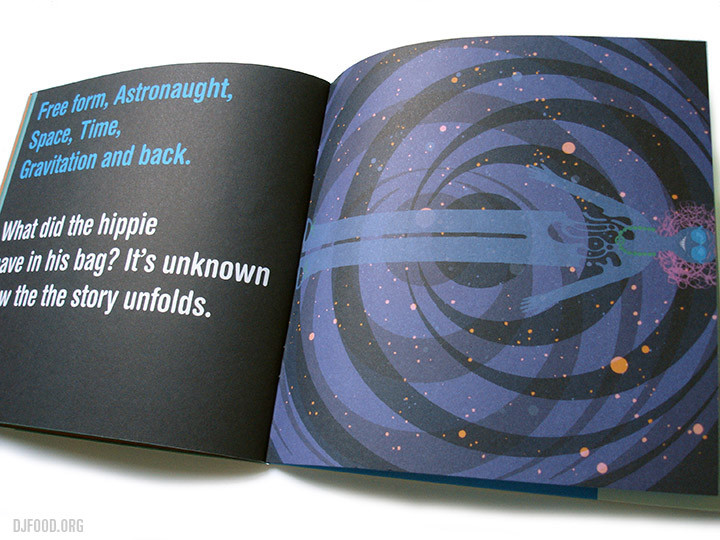
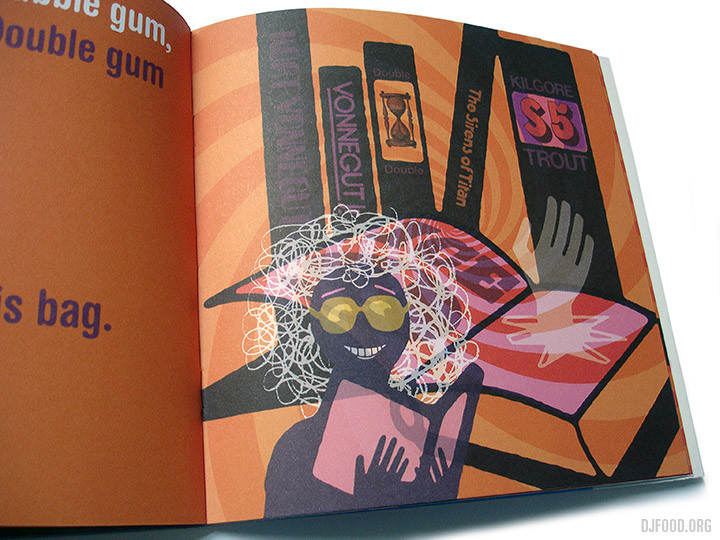
Search Results for: Record Roulette
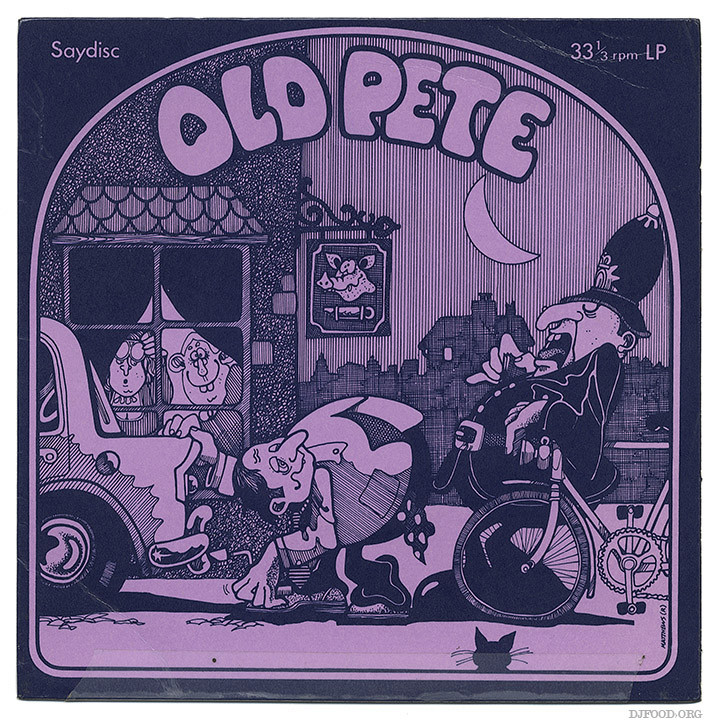
Found in a London basement this week, my eye was drawn to the illustration on the cover of the 7″ sleeve. ‘Sleeve drawing & design: Rodney Matthews, Plastic Dog Graphics‘, it said. I knew Rodney Matthews from hours spent looking at his posters our hip French teacher had plastered around his classroom in the 80’s, numerous record sleeves and Paper Tiger books. But I’d never heard of Plastic Dog Graphics so I looked it up on his website:
“In 1970, Matthews left the advertising world to form an art partnership with Terry Brace, who was an acquaintance from art college days and had played in the same band (Barnaby Goode) for a while. The partnership was related to a music agency and the two businesses were given the name Plastic Dog (graphics and music agency). The name was a joke at first (family dog!), but eventually became official.
Plastic Dog Graphics specialized in design for the music industry; everything from press ads to button badges to record covers, and what started as a company working mainly for local folk artists on the Village Thing label progressed to encompass internationally known artists via companies like United Artists Records, MCA Records, Sonet Records (Sweden), and Transatlantic Records. Rodney’s first full colour LP cover design was for the German band Amon Düül II (Live in London). It was to be the first of many.”
This sleeve dates from a year later so must be one of his first, but I can’t find it listed on Discogs although the label, Saydisc, is there. The content on the record is first person narrative, dodgy stories of the character Old Pete and his misfortunes, probably similar to a Viz of its day, although way tamer, more like pub banter.
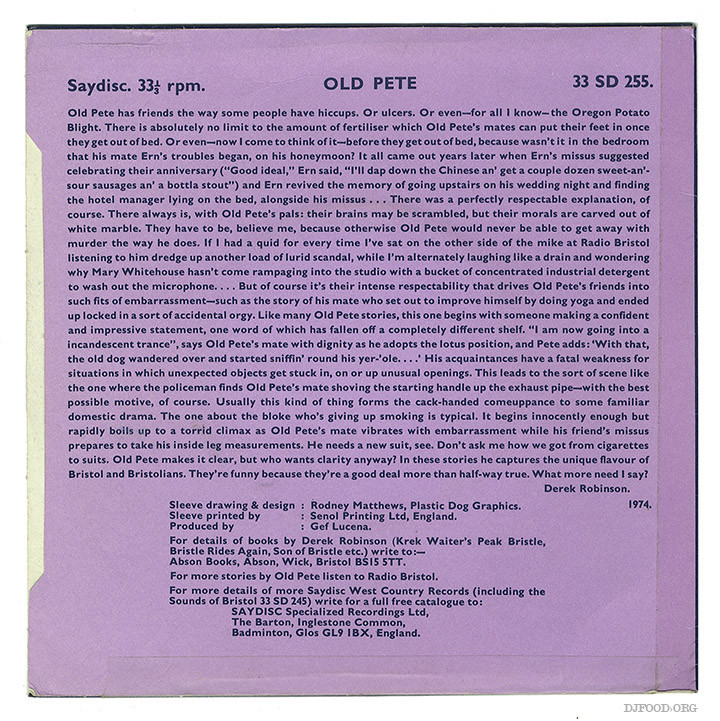
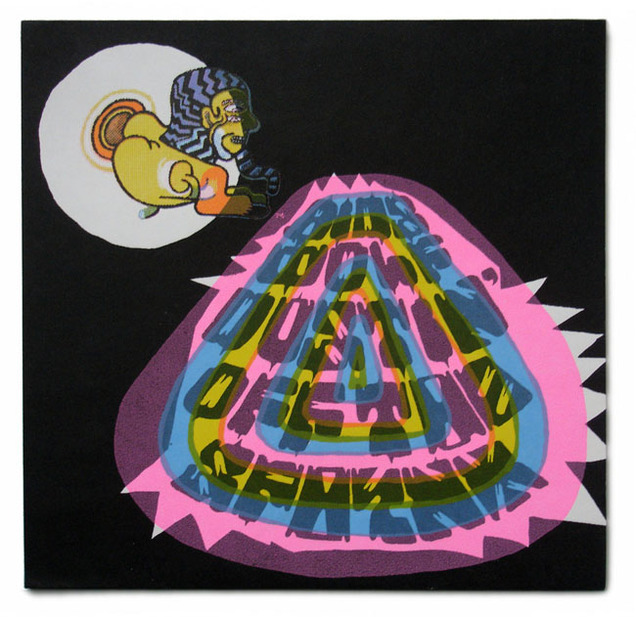
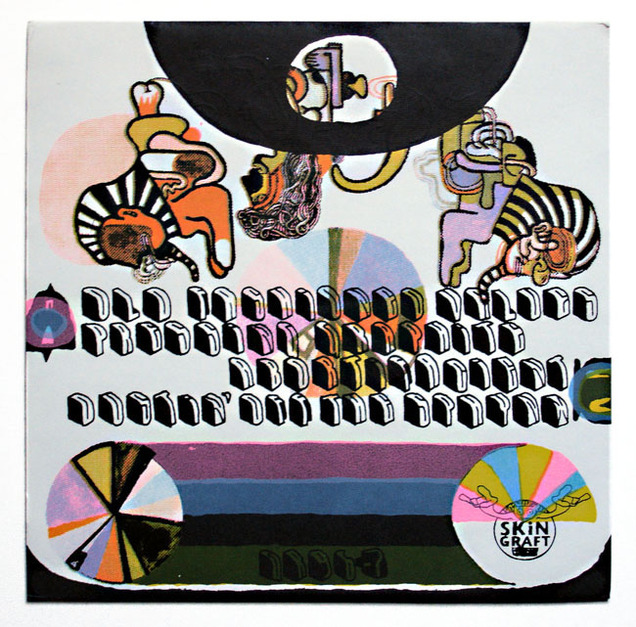
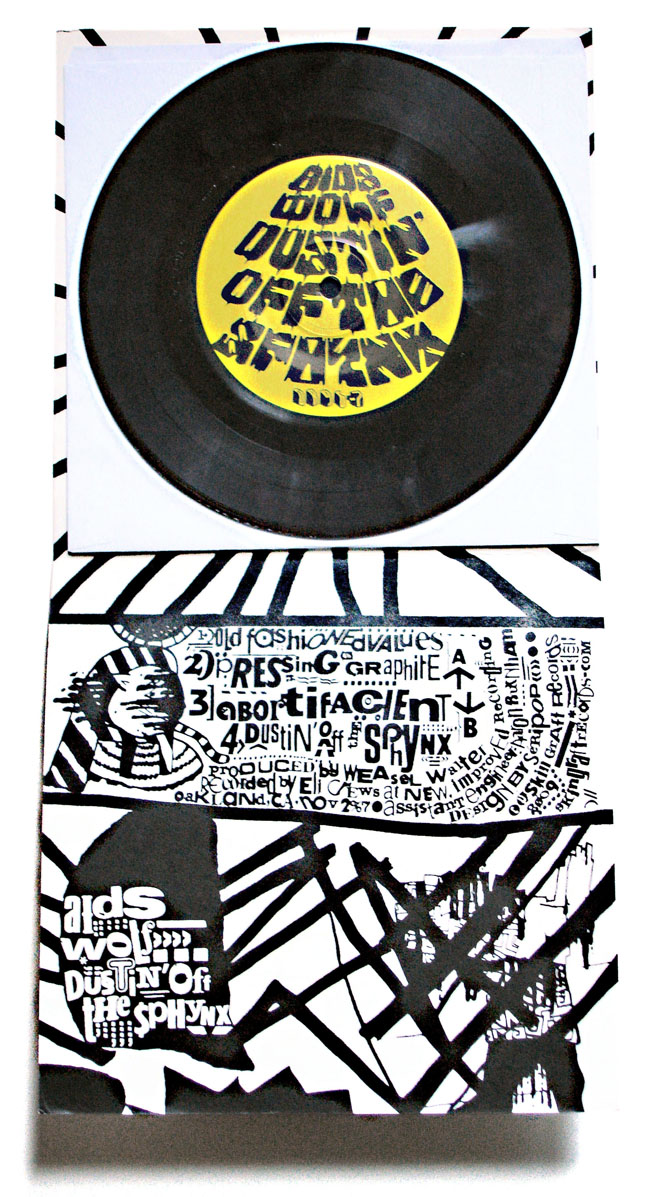
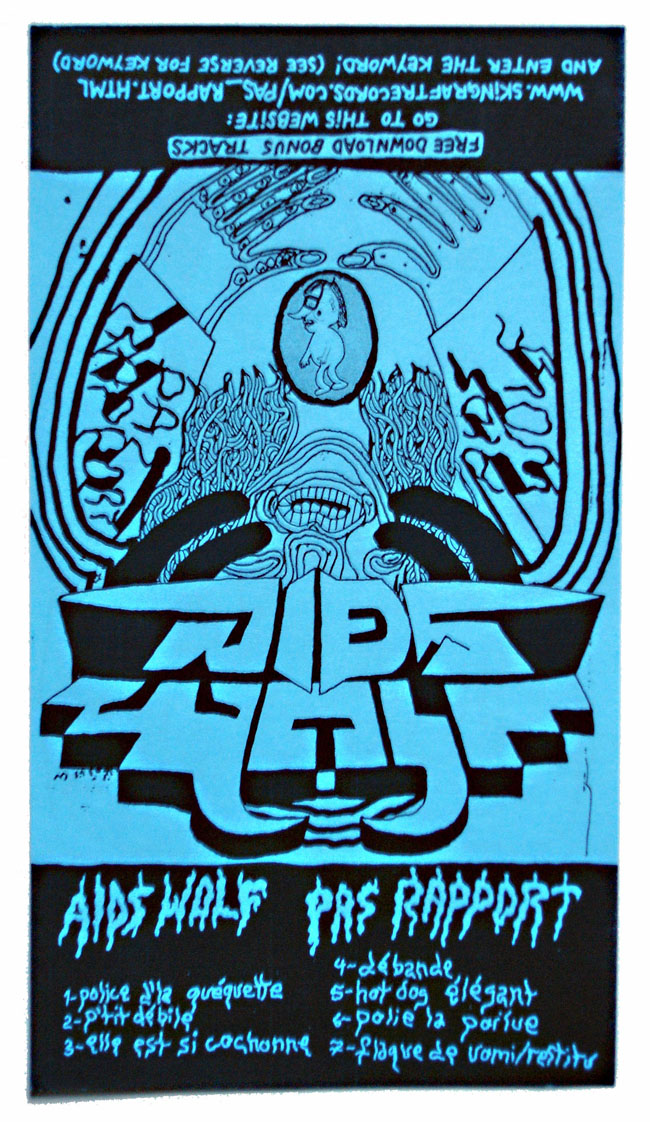
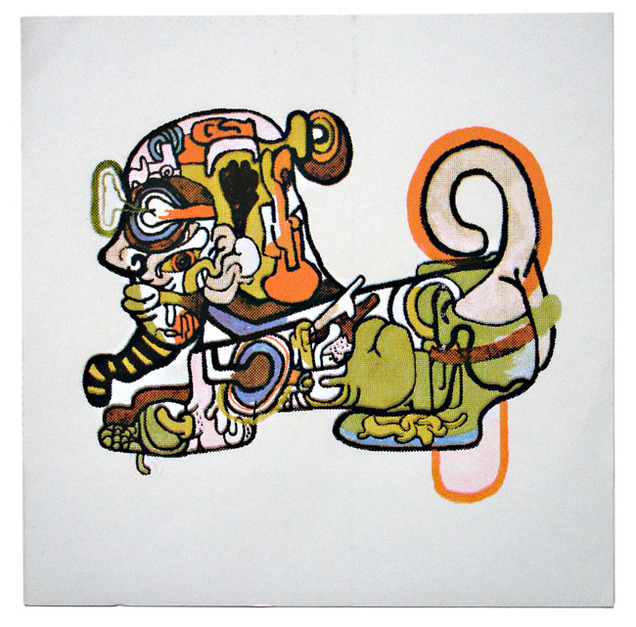
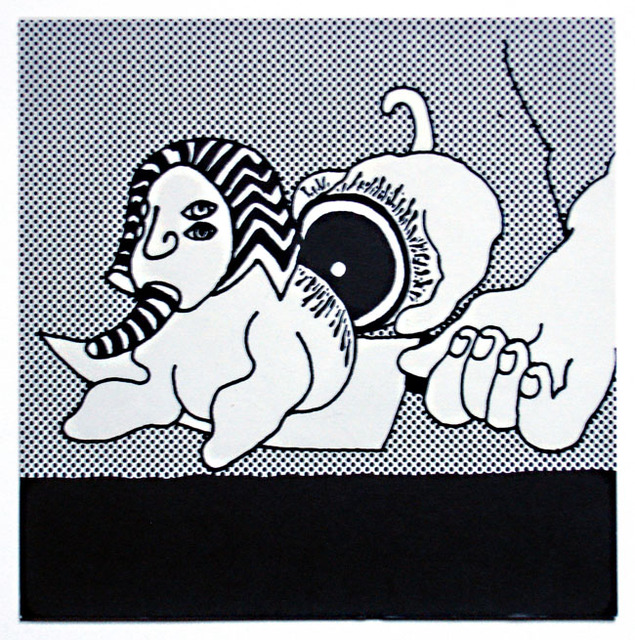 Aids Wolf – Dustin’ Off The Sphynx – 7″ with fold-out screen-printed cover, insert and tape inlay flyer, Skin Graft Records, 2009. Bargain bin find.
Aids Wolf – Dustin’ Off The Sphynx – 7″ with fold-out screen-printed cover, insert and tape inlay flyer, Skin Graft Records, 2009. Bargain bin find.
*I’ve decided to start a new offshoot of the Artifacts section just for records called Record Roulette. Increasingly I find myself buying records for their sleeves or packaging, regardless of the music, most of which I don’t know until I get them home. RR will be a showcase for these finds with Artifacts for all the other non-vinyl bits and bobs.
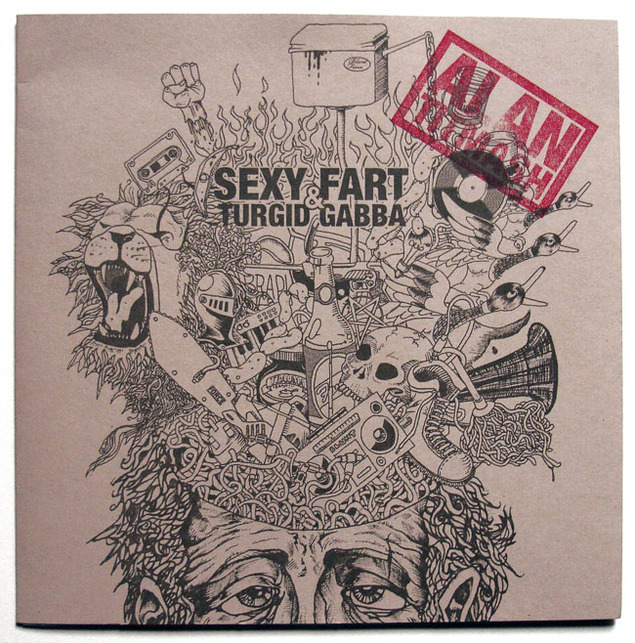
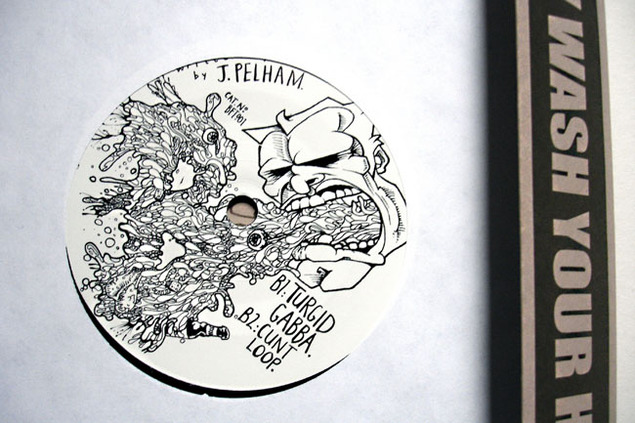
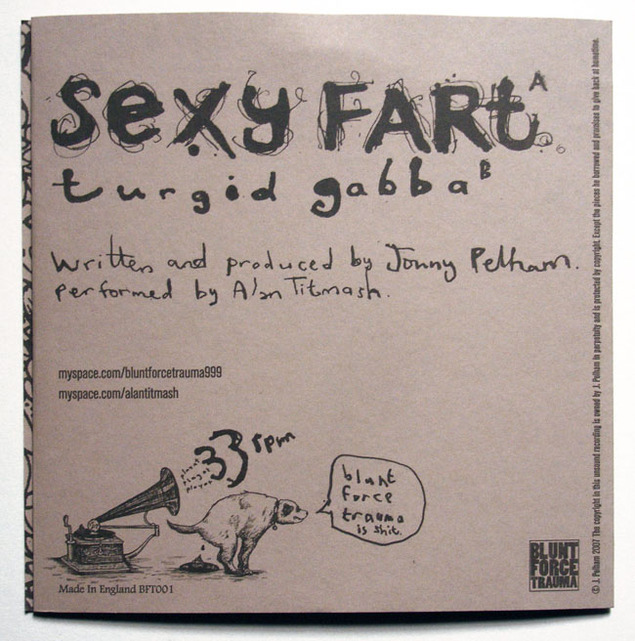
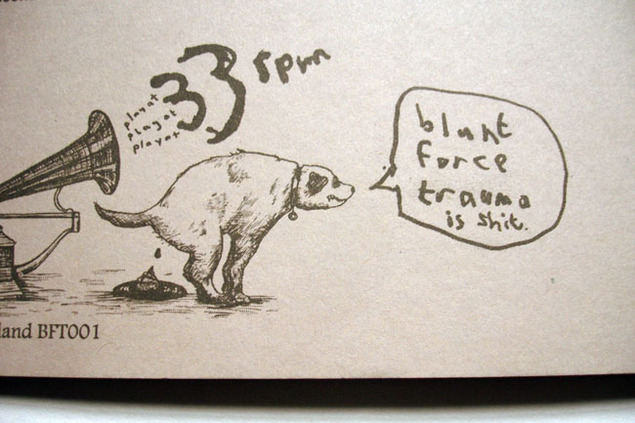 Alan Titmash – Sexy Fart / Turgid Gabba, 7″ foldout cover, Blunt Force Trauma 2007. R.I.P. HMV
Alan Titmash – Sexy Fart / Turgid Gabba, 7″ foldout cover, Blunt Force Trauma 2007. R.I.P. HMV
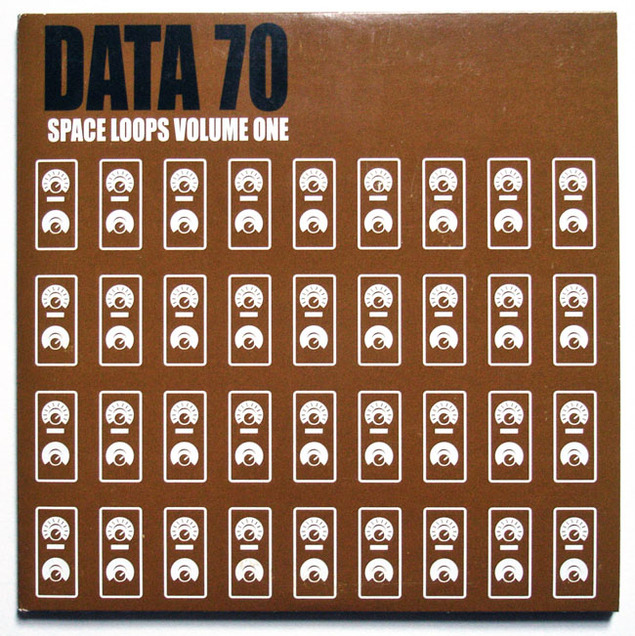
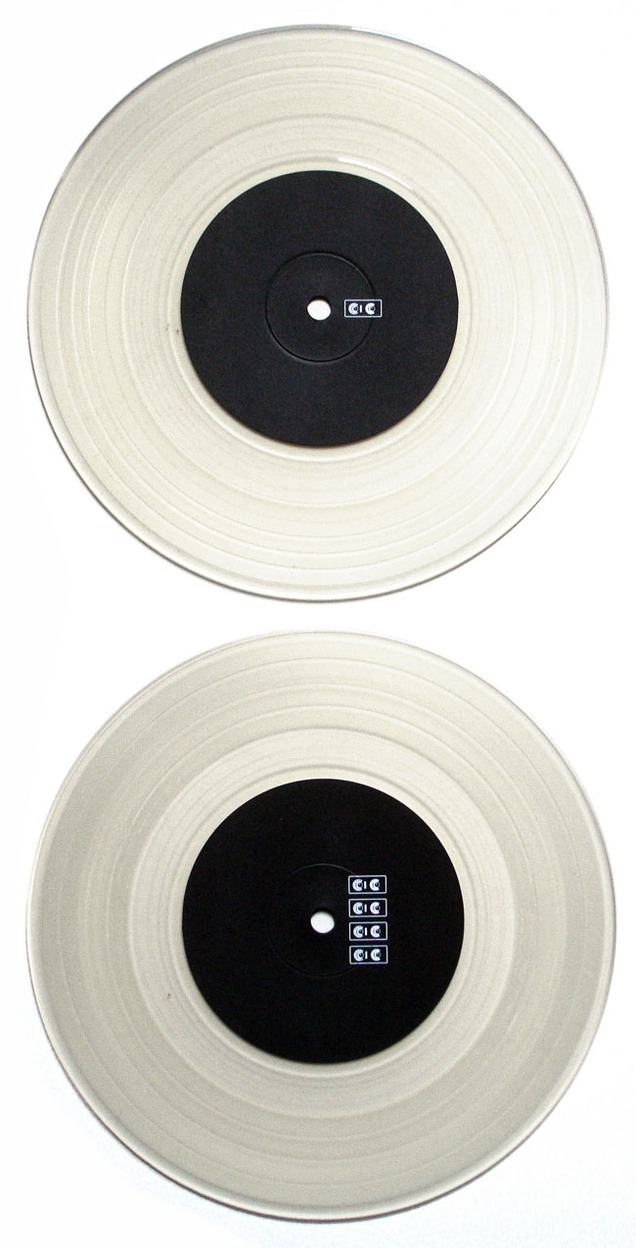
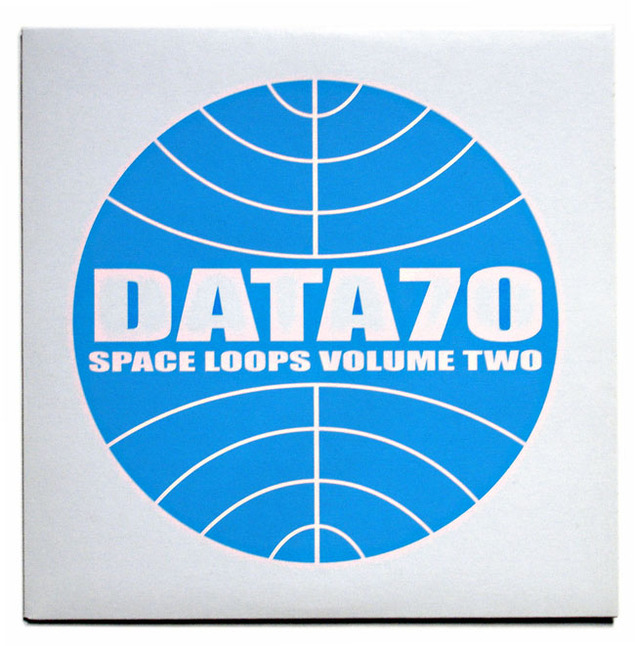
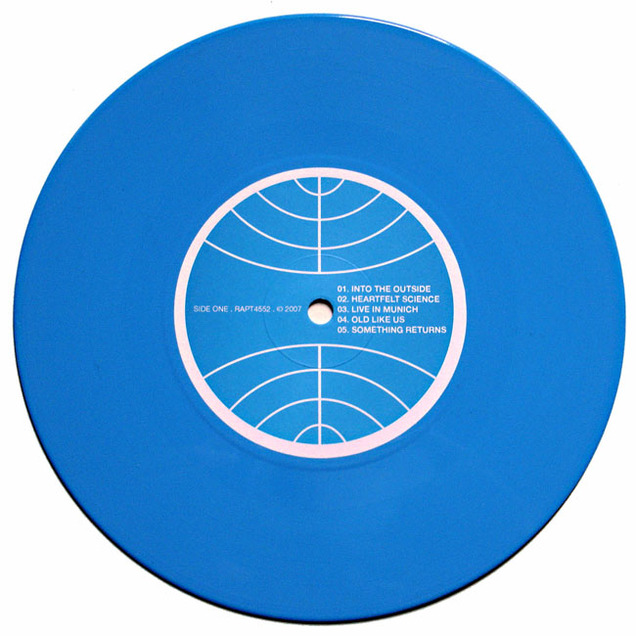
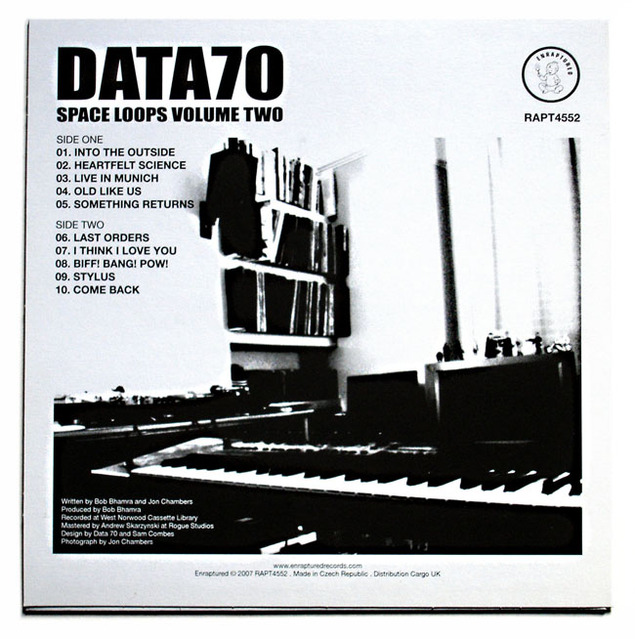 Date 70 – Space Loops Vol.1 & 2, 7″ covers and coloured discs, Enraptured Records 2004 / 2007
Date 70 – Space Loops Vol.1 & 2, 7″ covers and coloured discs, Enraptured Records 2004 / 2007
The Audio Janitor ’Composition 11 – audio roulette for three turntables’, triple vinyl and insert in plastic folder, Liquid Sky Music, 1999, record store find, London.
The set contains three copies of the same record, a compilation of sounds, beats, spoken word and atmospheres, to be played simultaneously with effects by dropping the needle anywhere on any side for 10-20 minutes. The Audio Janitor is a pseudonym of DJ Olive and this is no.3 of 333 copies.

‘The Incredible Sounds of the Synclavier II’ blue vinyl demonstration 12″, 1981, bargain basement find.
 Why do I enjoy record shopping? Entering a record shop is like walking into a huge exhibition of the best and worst music design and packaging from the last half a century. The difference being that the filtering of the collection is up to each shop, a democratic selection based on local tastes and trends, not a predestined selection committee, omitting pieces that the curator deemed unworthy. Not only is there too much to possibly see but it’s a selection that’s ever-changing from week to week, full of surprises and totally free to enter. Best of all is that you can handle the exhibits (apart from the extra special ones on the wall or behind the counter) and if you wish you can leave with your favourite parts, bank balance withstanding.
Why do I enjoy record shopping? Entering a record shop is like walking into a huge exhibition of the best and worst music design and packaging from the last half a century. The difference being that the filtering of the collection is up to each shop, a democratic selection based on local tastes and trends, not a predestined selection committee, omitting pieces that the curator deemed unworthy. Not only is there too much to possibly see but it’s a selection that’s ever-changing from week to week, full of surprises and totally free to enter. Best of all is that you can handle the exhibits (apart from the extra special ones on the wall or behind the counter) and if you wish you can leave with your favourite parts, bank balance withstanding.
To use another analogy it’s like leafing through a catalogue of both the known and unknown images of our age, an alternate musical history always nestling just a sleeve away from the accepted giants we’ve been told are ‘the greatest’ or ‘essential’. If one takes your fancy you can just tear out the page and add it to the ever-growing audiovisual scrapbook you’ve been curating since you had enough money and taste to start a collection. I especially like used stores because of the randomness and the fact that they exist outside of the ‘current’ music scene somewhat. Go into any new store and you’ll see a similar selection on the walls and in the New Releases racks, usually in multiples. Used stores inhabit a strange ‘now and then’ place, largely filled with unwanted items from the past but peppered with occasional upfront promos that some eager DJ or journo has already traded in to clear space. The unpredictable is what I like, the ‘Misc.’ section, the promise of buried treasure, the never knowing what you’ll find.
Record shopping for me is a visual, physical experience, rarely dipping into the aural aside from enduring whatever the staff want to torture their punters with to show how hip they are (I mean does anyone REALLY like Nico albums?). Of course some shops have a listening deck and I do use them as too many expensive ‘chances’ in the past have told me that I can’t afford such luxuries anymore. I still actually like the thrill of leafing through the unknown and spotting a sleeve or piece of packaging that invites me to pick it up through its cover design alone. I regularly buy used records because of their sleeves (foldouts, die cuts, special inks), intriguing handmade covers, odd vinyl pressings (colours, sizes, picture discs) and, sometimes, the design is just too nice to leave in the shop regardless of the music. As a format and carrier for art and design I find I’m drawn to records (and sometimes CDs too, there’s plenty of great CD packaging out there) even more than art books or prints and posters.
I like to think of this as ‘Record Roulette’, you take a chance that something that looks good or interesting might actually sound the same and it’s hit or miss of course (sorry, bad pun). But the excitement of the unknown in the bag for when you get home mirrors the buying experiences of old when shops rarely had listening posts and portable turntables were a luxury. One of the most enjoyable buying experiences in recent years was the Secret 7″ exhibition last year, where a combination of unknown art and music purchases had me tingling with excitement to see if I’d got the track I wanted. Also, in this on-demand web preview world, is the chance that maybe, just maybe, you’ll find a hidden gem that no one told you about. At the very least, you’ll have a nice item to hold and look at.
 Whilst in a bargain basement recently I overheard a conversation that went something like this:
Whilst in a bargain basement recently I overheard a conversation that went something like this:
“I got given a turntable for Xmas, only thing is, I lost all my records when my life turned upside down over the years. Thing with the iPod is that you keep any old crap on there don’t you? But when you buy a record you really have to make a choice that what you’re buying is something you want to keep around”.
Having always had records and turntables I’d not thought about the current vogue for owning a deck in such terms and I found it interesting that this was probably being played out all over for people of a certain age. It also highlighted something that made me think that it wouldn’t be long before the harsh economic reality of this trend (here comes the ‘but’…) would essentially stop it in its tracks… the price of vinyl.
Another conversation heard later in the same shop:
“Are old Hendrix records all expensive?”
“If they’re in good nick, yes, unless they’re some old compilation, but the original albums are all pricey these days”
“Well I would go for the reissues but when you see the price of them then it’s not much difference is it?”
 People ask me all the time in interviews, ‘do you still buy vinyl’? Yes, of course I do but in nowhere near the same quantity as I used to. There are a couple of reasons for this that have nothing to do with the digital age though. Firstly, I have close to 10,000 records, CDs, tapes etc. I’ve done a lot of buying in my time, 30 years worth, I have a lot of what I want, my wants list is minimal, also I don’t have the space for much more, in fact I’m actively trying to get rid of stuff, not accumulate more. Secondly, I have a family to support and new records aren’t exactly cheap anymore.
People ask me all the time in interviews, ‘do you still buy vinyl’? Yes, of course I do but in nowhere near the same quantity as I used to. There are a couple of reasons for this that have nothing to do with the digital age though. Firstly, I have close to 10,000 records, CDs, tapes etc. I’ve done a lot of buying in my time, 30 years worth, I have a lot of what I want, my wants list is minimal, also I don’t have the space for much more, in fact I’m actively trying to get rid of stuff, not accumulate more. Secondly, I have a family to support and new records aren’t exactly cheap anymore.
As much as I love vinyl – mostly for the size, sleeve, physical side of it – I don’t go so much for all that ‘it sounds so warm’ ish – if I’m looking at a £20+ vinyl copy against an £8 digital version then I’m afraid the digital is mostly going to win these days unless that LP has some pretty fine packaging around it. Being that I’ve been DJing digitally since 2006 I don’t need a physical copy, let alone that some releases aren’t even ON vinyl these days – something that’s thankfully a rarer occurrence though. With a ‘resurgence in vinyl’ story seemingly popping up somewhere every other week in the last few years I’ve also witnessed a steady growth in the prices of new records with some crazy totals in the last year alone. £18 for a 10″, £29 for a single LP with a stick on sleeve, $30 for a 10″ with coloured vinyl, £12 for a 12″ and that’s before we even get into the deluxe box set territory which will total a months record spending budget in one fell swoop. One online retailer recently offered a batch of ‘warehouse find’ copies of a 5 track 12″ released in 2010 at £18.99, the original price only 2 years earlier? £12.99.
 I’m not going to name and shame because a lot of these records are by people doing the independent thing, hence they’re making copies in limited quantities so their margins are tiny. But if you look amongst the racks there are also plenty of similar stories with major label artists too. I work in the industry, so I have a basic knowledge of costing out releases, I know roughly what costs what and I can see when someone is taking the piss with their prices. It’s not always the shops that are to blame either, several of the prices quoted above are from online retailers or labels selling direct with no physical shop or distributor to pay. Stores will buy in at a certain price and add their % on top as they do with everything, it’s in their interests to offer it at a good price because they’re in competition with all the online shops too so they can’t hike their prices unrealistically. I’ve had friends who’ve been turned down by stores because the cost price they wanted to sell their records at, so that they could break even, was too high for the store to retail it at once they’d added their percentage.
I’m not going to name and shame because a lot of these records are by people doing the independent thing, hence they’re making copies in limited quantities so their margins are tiny. But if you look amongst the racks there are also plenty of similar stories with major label artists too. I work in the industry, so I have a basic knowledge of costing out releases, I know roughly what costs what and I can see when someone is taking the piss with their prices. It’s not always the shops that are to blame either, several of the prices quoted above are from online retailers or labels selling direct with no physical shop or distributor to pay. Stores will buy in at a certain price and add their % on top as they do with everything, it’s in their interests to offer it at a good price because they’re in competition with all the online shops too so they can’t hike their prices unrealistically. I’ve had friends who’ve been turned down by stores because the cost price they wanted to sell their records at, so that they could break even, was too high for the store to retail it at once they’d added their percentage.
I understand that if you’re a hot artist or label then people will pay over a tenner for a one-sided, white label 12″ with no artwork and you can, for a while, name your price. I understand that is you’ve got a hand assembled, stenciled, stickered, screen-printed sleeve with coloured vinyl then you’re going to have to charge more and that’s fine, I’ll probably be in the line waiting to buy one too. I understand that for most artists a vinyl release is now little more than a vanity item, done in such low print runs that if they break even it’s a bonus. But the ceiling has been raised so high now that I feel some of the current pricing is preying on the hipster vinyl ownership crowd and it’s turning regular record buyers off.
*I started writing this months back – since then, Record Store Day 2013 has happened. I could probably add another hundred price hike horror stories to the above list but I’ll add just one. My own RSD 4×12″ repress release is currently being sold on the Ninja Tune webstore for £19 but I’ve seen it priced at £28, £32 and £38 in various physical stores since April 20th. Given that most towns will be down to one or two independent stores these days if they’re lucky then it shows that some will just name their price and see if it sticks.*
 Nowhere is this more apparent than on Record Store Day, something I dearly love but has already been reduced to a scrum of genuine fans queuing for overpriced discs SO limited that you’d think the demand for some mainstream groups had shrunk to a few hundred. The new Blur single of a couple of years ago is a prime example, a print run so small that most shops were only allowed three copies. For a band of that size, releasing their first new music for some years, you wonder what the thinking was at the label aside from, ‘let’s really piss the record buyers off’. Facing off against them are the flippers ready to list as much on eBay before the day is out so that they make the tidy profit, not the artists or labels.
Nowhere is this more apparent than on Record Store Day, something I dearly love but has already been reduced to a scrum of genuine fans queuing for overpriced discs SO limited that you’d think the demand for some mainstream groups had shrunk to a few hundred. The new Blur single of a couple of years ago is a prime example, a print run so small that most shops were only allowed three copies. For a band of that size, releasing their first new music for some years, you wonder what the thinking was at the label aside from, ‘let’s really piss the record buyers off’. Facing off against them are the flippers ready to list as much on eBay before the day is out so that they make the tidy profit, not the artists or labels.
* see ex-Marillion Fish‘s statement that widely did the rounds post-RSD*
I saw so many major league artists who had runs of records in the hundreds, not thousands, which boggles the mind when the promotion for such an event means that attendance is tenfold. Major labels have the resources to press far higher quantities than indies, sure, and pressing more copies means margins come down and so should prices. I’m betting that there would then be plenty more buyers if those prices were sensible too. It’s not like there aren’t people selling records cheaply out there, there are plenty of labels with sensible pricing, even when something is limited. Unfortunately we seem to be getting locked into this limited edition, niche item spiral now (I saw a standard 12″ listed as ‘deluxe’ the other day) as well as being in the middle of a recession and all I can see is people pricing themselves out of the market.
(All photos taken at Record Palace, Amsterdam except the last panorama; Death of Vinyl, Montreal.)

